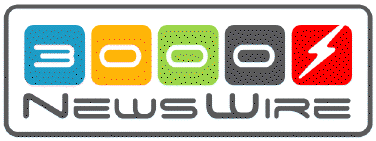 |
 |
MB Foster Sponsor Message |
|
|
|

March 2002
Boosting Your e3000
Productivity
What is HP Eloquence?
Those HP 3000
sites that are considering a port to HP-UX will want to take a look
at HP Eloquence.
Eloquence is an IMAGE-like database that runs on HP-UX, LINUX and Windows NT/2K. It is owned by HP Germany and supported by a third party, Marxmeier. Here are the Web references for HP Eloquence:
HP Eloquence home page: www.hp-eloquence.com; Marxmeier Software AG: www.marxmeier.com. The e-mail contact at Marxmeier is info@marxmeier.com.
The Eloquence API (i.e., the “intrinsics”) is very similar to TurboIMAGE on the 3000, but not identical. Therefore, HP has created a TurboIMAGE emulator layer that provides intrinsics that attempt to work exactly like the 3000 calls. We found that this interface is very close to the TurboIMAGE interface. In our work converting Suprtool to Eloquence, we found only one bug (in a DBINFO call that a user application would seldom use) and a couple of subtle differences having to do with record numbers.
And we have found Marxmeier very responsive when working with them on integrating Suprtool into Eloquence.
Features
The attributes of the latest HP Eloquence are described on this Web page: www.hp-eloquence.com/sales/hp3k.html
Here is a summary of the features in the latest Eloquence version:
Fully integrated indexing capabilities.
Eloquence no longer uses hashing. So there are no “migrating secondaries” and no set level locking is required in order to add or delete an entry from a master set.
Capacity is no longer relevant. The HP Eloquence database grows dynamically when required (including master data sets).
Additional locking capabilities.
Additional database utilities including database restructuring (not yet available for A.06.xx).
Multiplatform support (HP-UX, Windows NT/2000, Linux).
Network transparent.
Dynamic, nested transactions, transaction isolation (uncommitted changes are not visible to other processes).
Deadlock detection and recovery.
Online backup.
New, more flexible security subsystem.
Limitations
The current Eloquence has some limitations that are more restrictive than the current TurboIMAGE, but the upcoming Eloquence should reduce that.
Eloquence A.06 has similar limits to pre-C.09 versions of TurboIMAGE. Eloquence A.07 is under development and will be less limited.
Sets: The maximum number of sets is 199 in A.06 and work on higher limits is underway.
Items: Up to 1024 item names, Items may be defined to contain numeric data or ASCII string data. The string designator must be followed by the maximum string length. The string length must be even and cannot exceed 4,096 characters. No packed decimal data type, or numeric ASCII. For more details, check this Web page: www.hp-eloquence.com/doc/html/manuals/dbms/dbms-19.html
Search items: Limited in size to 120 bytes.
Paths: Up to 16 paths for a dataset.
Maximum dataset capacity: Limited only by system disk space. However, maximum number of records may be about 2,000,000,000, since there are still 32-bit pointers to records.
Field List: only supports the full-list (“@”) option; you cannot specify a list of field names.
Third-party Indexing: not supported, but indexed sequential is built in, so you may not need it.
Web Articles
In the NewsWire’s past articles about HP Eloquence:
“Eloquence is a product of HP Germany running on Intel-based systems and HP’s 9000 hardware. Developed by Marxmeier Software AG for HP as a complete development environment for discontinued HP 250 systems, it has a version of BASIC for development and a database engine. TransforMix Computer Corp., a distributor of Eloquence, used the database as part of a team project to re-host 4 million lines of MPE-based Fortran and C/iX code to HP-UX.
“It is very TurboIMAGE compatible,” Transformix’s Charles Finley said in an Internet posting. “Although it was originally intended to provide a soft landing for users of the discontinued HP 250 and 260 users by allowing them to run their applications without modification on HP-UX, it has taken on a new life.”
And from the NewsWire article “Eloquence speaks up as IMAGE replacement”:
From a technical point of view, Marxmeier said Eloquence is independent. Ever since the product’s A.06.00 release it has run on Linux and Windows NT in addition to HP-UX. Marxmeier added that “IA-64 native support likely becomes available in 2002, depending on when the hardware becomes more commonplace.”
The future
As Robelle users begin
experimenting with Eloquence on their data and implementing
conversions, we will be gathering much more data on this product. We
will publish our results in future Robelle Tech columns. Specific
practical information that we will be looking for more information on
includes: comparability of Eloquence indexed-sequential access to
TurboIMAGE TPI, transaction management capabilities of Eloquence,
reliability, and scalability.
Copyright The 3000 NewsWire. All rights reserved.